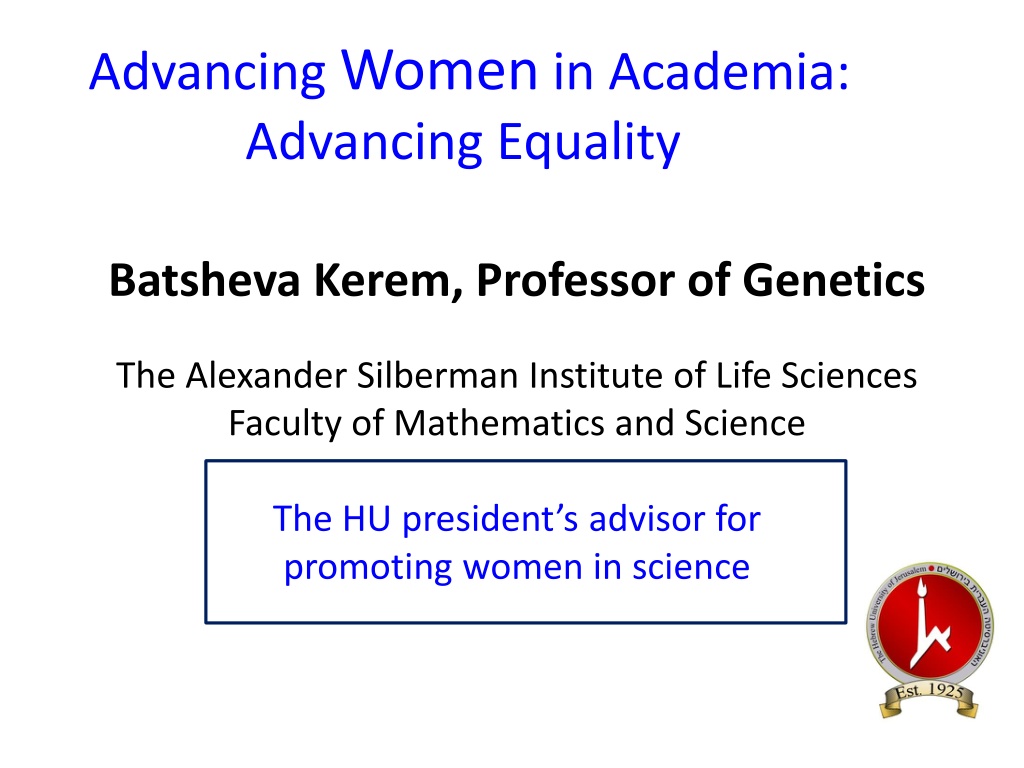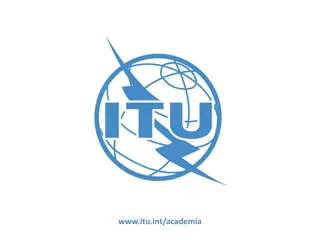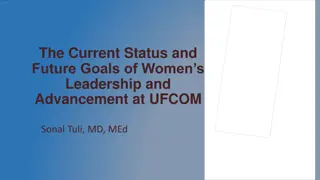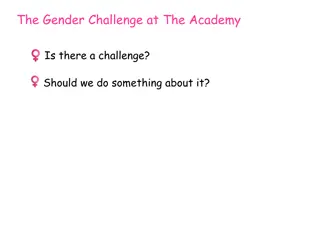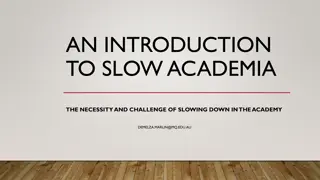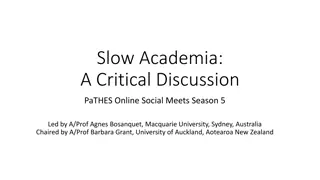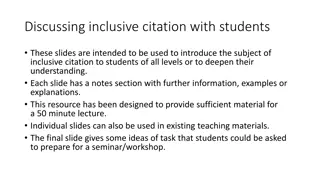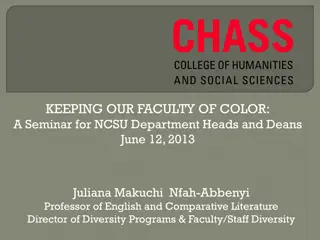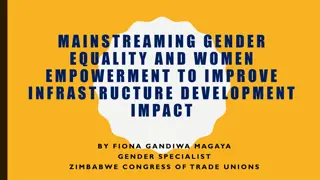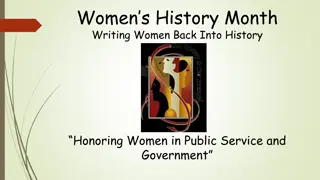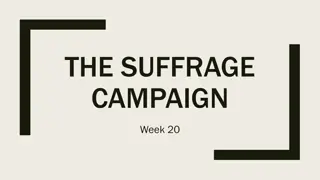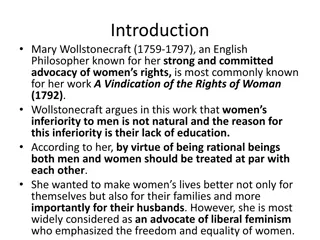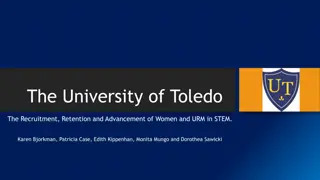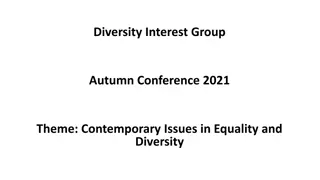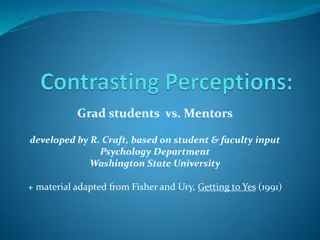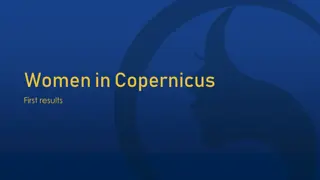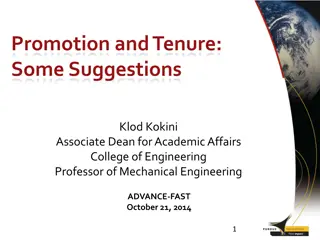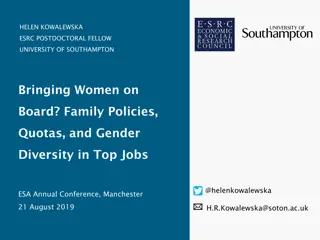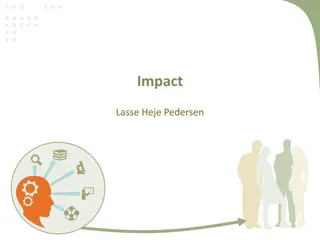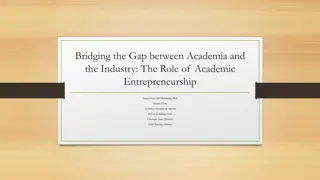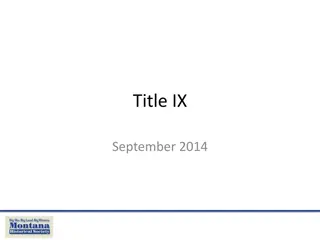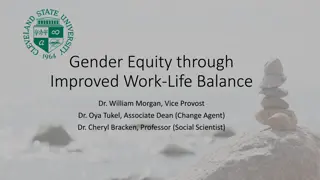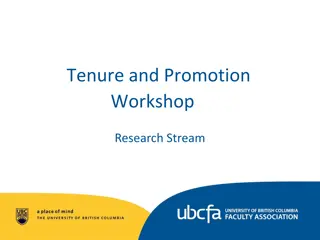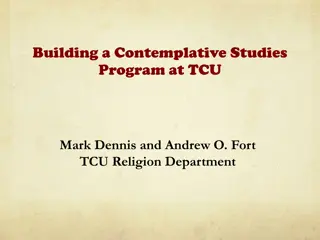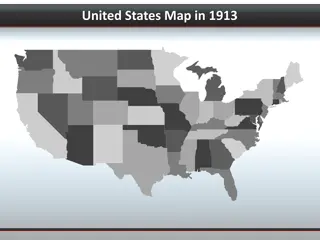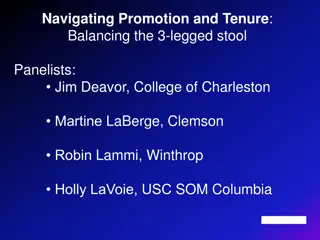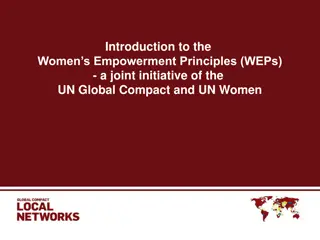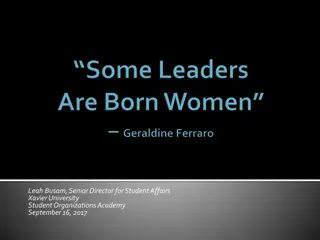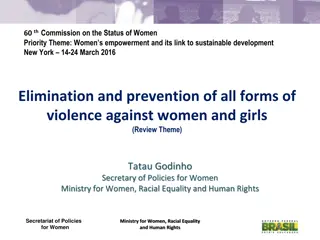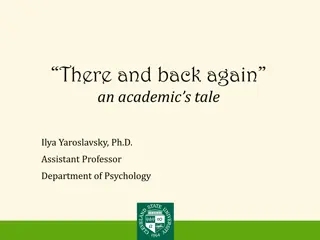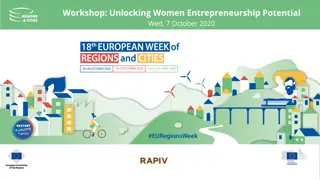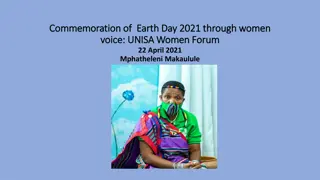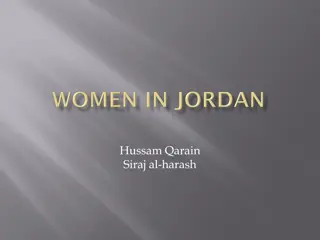Advancing Women in Academia: Challenges and Progress
Gender composition data from the Hebrew University reveals disparities in academic ranks and disciplines. Despite efforts to promote women in academia, challenges such as post-doc opportunities abroad and balancing family responsibilities persist. Initiatives like day-care facilities and women fellowships aim to support female students and staff.
Download Presentation

Please find below an Image/Link to download the presentation.
The content on the website is provided AS IS for your information and personal use only. It may not be sold, licensed, or shared on other websites without obtaining consent from the author. Download presentation by click this link. If you encounter any issues during the download, it is possible that the publisher has removed the file from their server.
E N D
Presentation Transcript
Advancing Women in Academia: Advancing Equality Batsheva Kerem, Professor of Genetics The Alexander Silberman Institute of Life Sciences Faculty of Mathematics and Science The HU president s advisor for promoting women in science
The Glass Ceiling and the Scissors Diagram Add title Gender Composition of the Faculty at HU
Gender Composition at the Hebrew University (2015/2016 ( 26% of the faculty are women Full Professors 14% Associate Professors 26% Senior Lecturers 30% Lecturers (untenured) 55%
Gender Composition at the Hebrew University (2015/2016) 26% in the entire University 34% in the Humanities 18% in experimental and exact sciences
Gender Composition at the Hebrew University (2013/2014) Experimental sciences Humanities 18% are women 34% are women 21% Full Prof. 9% Full Prof. 31% Associate Prof. 22%Associate Prof. 41% Senior Lecturer 20% Senior Lecturer 51% Lecturer 70% Lecturer* 26% in total
Women equality in the HU academic staff HU is an entity whose responsibility is the dissemination of knowledge and education as well as breaking ground in science and human thought. It is our duty to voice our position on women in academia, provide an example, and do our utmost to create the necessary conditions for increasing the percentage of women in our faculty.
Why so few women in the experimental sciences? Only a small number of the relatively large number of Ph.D. female students opt for an academic career. Post-doc abroad a bottleneck for most women (relocation for 4-5 years). Joining the academic life in the university: combining family with teaching and research.
Courses of action - for female students and staff Day-care facilities (nursery schools) - we have one in each of the HU campuses. Special rooms for diapering and nursing - we have one in each of HU campuses. Special women fellowships (B.A post doc).
Women Fellowships for Post-Doc training abroad Three years ago we launched a Post-Doctorate Fellowship Program for excellent PhD students exclusively for women. The first budget was limited 100,000 $. We funded five one year fellowships (16,000-21,000 $). We have now significantly increased the funding to ~250,000 $. We expanded the fellowship program to 3 arms: 1. One year fellowships (each of 20,000-25,000$). 2. Two years fellowships (each of 40,000-50,000$) 3. Dual location fellowship (20,000-25,000$).
Courses of action pose doc day Conferences/workshops to encourage women to do a post doctorate fellowship abroad or in a dual program. The program includes sessions on: How to choose a Post-Doc position A discussion with female faculty members who joined HU in the last 5 years following Post-Doc training abroad. Presentation of available funding for women, etc.
Courses of action - for female medical students A special program for medical students in the clinical years who gave birth and took several weeks of maternity leave. There was no solution for such situations and the student had to repeat the studies in the missing ward. We built a program in which each of the students has a unique missing course in the summer, or between year 6 and 7.
Courses of action - for female faculty One year extension of the tenure-clock to faculty who gave birth. Reduction of teaching load for women faculty upon return from maternity leave. Gender composition of committees, especially in High-Powered committees.
Courses of action - for female faculty Meetings of all young female faculty that are still before tenure. A social network. During the meeting we discuss challenges and difficulties they experience aimed to find solutions. Follow the promotion process in cases od delay we require explanation from the dean. The last university s annual journal was dedicated to women s research projects.
Courses of action - for female students A university website was launched with online information regarding funding sources for women at the university and in Israel.
A new program Recruiting, Retaining and Advancing Women Each unit will build an active recruitment program: aims and action plan (from PhD students faculty): PhD and post doc special fellowships Encouraging to apply for an academic position Active recruitment information on former excellent PhD students, continuous communication with excellent post docs Structured decision making process Training of all members of the recruitment and promotion committees unconscious bias.
A new program Recruiting, Retaining and Advancing Women in Science Encouraging to apply for an academic position Training of committee members in unconscious bias Structured decision making process Doctorate and post- doctorate fellowships Develop a program: aims and action Documenting the current status of women Active recruitment
